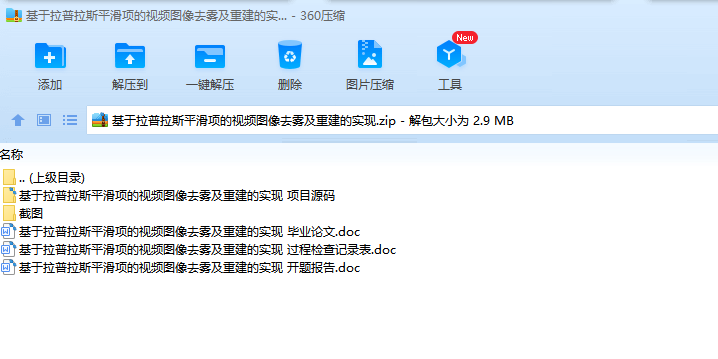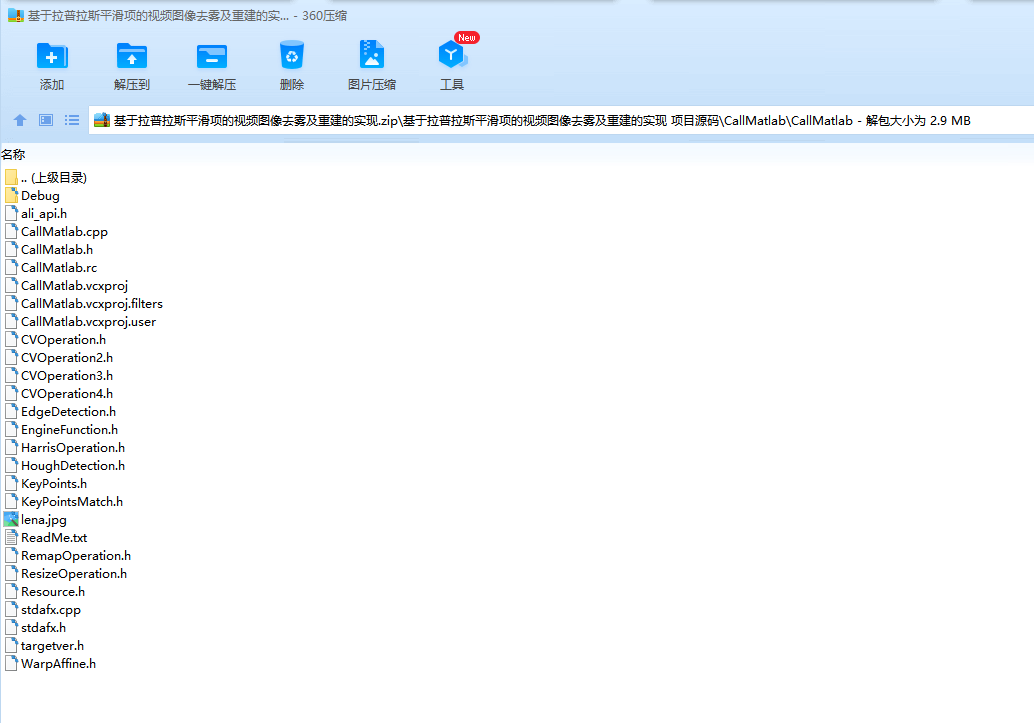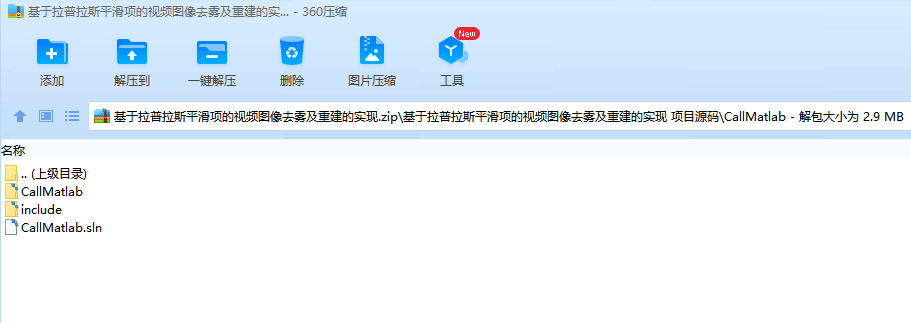【摘 要】
视频去雾一直是图像处理领域一个备受关注的题目,其主要目的是将被大雾天气所影响的视频尽可能地还原成没有被大雾情况下的真实图像。相比于雾天下的视频,去雾后的视频还原了一部分被雾天所模糊的图像细节。它减少了雾天视频对实际生活和工作中对人们带来的影响,如交通出行,户外监测系统等。举例说,早年间由于视频去雾技术受限,许多户外监测系统在大雾天气下无法正常工作,影响到了人们的正常出行和生产,所以人们希望利用有效的方法将这些雾天影响下的视频尽可能真实地还原。
本文旨在探究一种不同于现有的最小化能量函数,基于拉普拉斯平滑项建立一个新的能量函数模型。对于待处理的视频帧序列,先生成每一帧的深度图,然后通过初试的深度图去分别计算对应的颜色一致性项,几何相关项,平滑项和拉普拉斯平滑项。其中,我们提出了新的颜色一致性项和几何相关项,它们考虑到大气散射效应的影响;同样,拉普拉斯平滑项可以更好地保存物体的细节,避免失真和模糊。最后,通过迭代化解能量函数最小方程,得到对应的立体重建后的去雾视频。本文最终展示的,是基于拉普拉斯平滑项的立体重建后的图像,与原待测试视频帧序列对比后所能达到的最好效果。
【关键词】 视频去雾;立体重建;拉普拉斯平滑;场景深度
[ABSTRACT]
Video defogging has always been a topic of concern in the image processing field. The main purpose of the video defogging is to restore as much as possible the video that is affected by fog weather to real images without being affected by heavy fog. Compared to the video in the foggy world, the post-fog video restores a part of the blurred image details of fog. It reduces the impact of foggy video on people in real life and work, such as traffic and outdoor monitoring systems. For example, due to the limited video defogging technology in the early years, many outdoor monitoring systems were unable to work properly under heavy fog, affecting people’ s normal travel and production. So people want to use effective methods to restore the video under the influence of these fogs as realistically as possible.
This paper aims to explore a new energy function model based on the Laplacian smoothing term that is different from the existing minimum energy function. For the sequence of video frames to be processed, a depth map of each frame is generated, and then the corresponding depth map is used to separately calculate the corresponding color consistency item, geometric correlation item, smooth item, and Laplacian smoothing item. Among them, we propose new color consistency terms and geometric correlation terms that take into account the effects of atmospheric scattering effects. Similarly, Laplacian smoothing items can better preserve the details of objects and avoid distortion and blurring. Finally, by iteratively solving the minimum equation of the energy function, a corresponding stereoscopically reconstructed defogging video is obtained. The final display of this paper is based on the stereoscopic reconstruction of Laplacian smoothing terms, and the best results that can be achieved after comparing with the original video frame to be tested.
[Keywords]: video defogging; stereoscopic reconstruction; Laplacian smoothing; scene depth
目 录
第 1 章 引言 5
1.1 研究背景和意义 5
1.2 视频去雾问题的描述 6
1.3 本文的工作 8
1.4 本章小结 8
第 2 章 综述 9
2.1 传统的视频去雾方法 9
2.2 基于拉普拉斯平滑的视频去雾方法 12
2.3 本章小结 13
第 3 章 视频去雾和立体重建方法 14
3.1 颜色一致性项的构建 14
3.1.1 评估深度图的颜色一致性 14
3.1.2 基于散射效应的颜色一致性项的计算 15
3.2 几何相关项的构建 17
3.3 平滑项的构建 18
3.3.1 朴素的平滑 18
3.3.2 基于传输的排序约束的平滑 19
3.4 拉普拉斯平滑项的构建 20
3.5 立体重建深度图的构建 22
3.5.1 能量方程的构建 22
3.5.2 能量方程的最优化 23
3.6 本章小结 24
第 4 章 实验和分析 25
4.1 实验结果展示 25
4.2 实验结果与问题分析 26
4.3 本章小结 27
第 5 章 总结与展望 28
5.1 研究成果总结 28
5.2 本章小结 29
参考文献 30
致 谢 32


2L%}6ZF2[%%`CG.png)

DQ%LIN0SV)Q~]I.png)

9@FY84.png)





